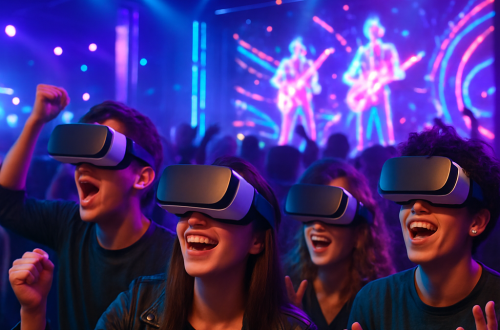The Renaissance of Vinyl Records: Why Analog is Making a Comeback
In an era dominated by digital formats and streaming services, the resurgence of vinyl records as a preferred medium for music enthusiasts seems almost anachronistic. Yet, this revival is not just a fleeting nostalgia. Vinyl records have seen a consistent increase in sales over the past decade, marking a significant comeback that suggests a deeper connection to the analog experience. This article explores why vinyl records are making a comeback, highlighting the cultural, auditory, and psychological factors that contribute to the enduring appeal of analog music.
The Cultural Aspect: A Return to Tangibility and Artistry
One of the most compelling reasons for the resurgence of vinyl is the cultural shift towards owning physical media. In a digital age where music is often consumed in the form of files and streams, vinyl records offer a tangible connection to music. Owning a record provides a physical experience that digital formats cannot replicate. This includes everything from the act of flipping a record to examining the album cover art and liner notes. The artwork and packaging can be as much a part of the experience as the music itself, often including posters, lyrics, and other memorabilia that enhance the listener’s connection to the album.
Vinyl collectors often view their collections as extensions of their personal identities, showcasing their taste and dedication to the art of music. The act of collecting records from crate digging in dusty shops to attending record fairs adds a communal and adventurous element to music consumption that streaming services cannot offer.
The Auditory Experience: The Warmth of Analog Sound
The sound quality of vinyl records is frequently cited as a superior, more authentic listening experience compared to digital formats. Vinyl enthusiasts argue that analog sound has a warmer, richer quality due to its continuous signal that more closely replicates live sound. Unlike digital music, which samples audio at intervals, analog recordings capture the complete sound wave.
This difference in sound production means that vinyl can offer nuances and a level of detail that digital formats might compress and lose. For audiophiles, this means engaging with music in a way that feels more true to the original performance. The occasional pop or hiss of a vinyl record is often part of the charm, adding a sense of history and authenticity to the listening experience.
Psychological Impact: Engaging More Senses
Listening to vinyl is an activity that engages multiple senses, which can enhance the emotional connection to the music. The ritual of handling vinyl removing the record from its sleeve, placing it on the turntable, and carefully dropping the needle requires a level of attentiveness and care that can make the listening experience more rewarding. This active involvement can create a ritualistic moment where the listener is fully engaged in the act of listening, rather than music being a passive background noise.
This multi-sensory experience can heighten the emotional impact of the music. The physical act of playing a record requires the listener to be present in the moment, potentially deepening the emotional and psychological impact of the music. For many, this makes listening to vinyl a more immersive and memorable experience.
Vinyl as a Social Connector
Vinyl records also play a significant role in social interactions. The resurgence of record shops, vinyl cafes, and listening parties speaks to the communal aspect of vinyl collecting. These spaces allow music lovers to gather, share their favorite albums, and discover new music in a social setting. This aspect of community building is significant, especially in an increasingly isolated and screen-dominated world.
Moreover, the act of sharing music on vinyl can be a deeply personal gesture. Giving someone a record can be symbolic, akin to sharing a part of one’s musical identity. This social exchange adds another layer of meaning to the vinyl experience, reinforcing its resurgence in today’s culture.
The Market Dynamics: Limited Editions and Collector’s Items
The vinyl industry has smartly capitalized on the collector’s mentality, often releasing limited edition pressings, colored vinyl, and special reissues. These items are not just music records; they are collectibles and investments. Scarcity and exclusivity drive the desirability of these records, often resulting in immediate sellouts and high secondary market prices.
Record labels and artists also recognize the vinyl format as a way to offer something unique and tangible that digital formats cannot match. This has led to a symbiotic relationship between artists and vinyl enthusiasts, where limited edition records often include extras such as autographs, exclusive artwork, or additional content, making them highly prized.
Looking Ahead
The renaissance of vinyl records is more than just a revival; it’s a reaffirmation of music as an art form that is best appreciated in its most tangible form. As long as there are listeners who seek a deeper, more engaged relationship with music, vinyl will likely continue to thrive in a digital age.
The sustained interest in vinyl suggests a broader cultural movement towards more mindful consumption and a desire to connect with media in a more meaningful way. Whether for the love of sound quality, the joy of collecting, or the tactile experience, vinyl records offer something that goes beyond mere listening – they offer an experience. As new generations discover the unique qualities of vinyl, its future seems not just nostalgic but vibrant and evolving.


